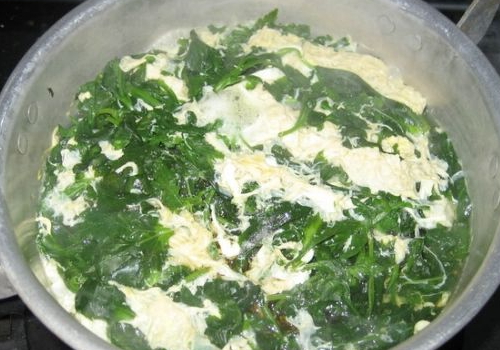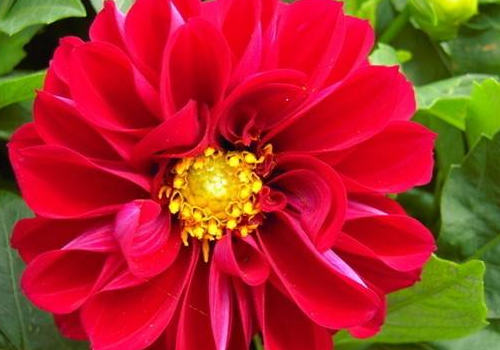Introduction to the method of flowering and planting of Qianqu
Qianchi is known to few people, but many people have seen it, so when will it blossom? Introduction of planting methods?
When will Chiku bloom:
The flowers of Chichu are aggregated, the pedicels are relatively short, and the small flowers gather together, which looks like a big spike. The color of flowers is mainly reddish purple or lavender, very gorgeous.
Qianchi is a kind of flower that blossoms for a long time. It usually blossoms from July to September. It can be watched for 2 or 3 months, giving people a beautiful visual enjoyment.

Introduction to the planting method of Lysimachia chinensis:
Seed propagation: spring sowing in March-April, before sowing, the seeds will be mixed with fine soil, then sowed on the bed, covered with soil 25px, and finally covered with grass and watered. The seedlings emerged 10-15 days after sowing, and the grass was uncovered immediately. Seedling height 250px was transplanted around. 3 plants were planted in each hole according to the distance between rows and 750px500px.
Cuttage propagation: strong branches were selected in spring, cut into about 300px length, leaves were removed, and the depth of oblique sowing into the soil was cuttings 1 to 2, pressed, watered and transplanting after rooting and long leaves. Ramet propagation: dig up the root clump from April to May in spring, cut the bud into a clump, and plant it in the wetland where sufficient base fertilizer is applied.
Main points of cultivation:
(1) lax requirements for soil, cold resistance, light and moisture. Fertile soil is the best cultivation.
(2) it can be propagated by sowing, cutting, ramet and so on. Sowing must be carried out in wetlands; cuttings are carried out from June to July, the new branches are cut off and inserted into muddy water, and they can take root in a month; ramet in spring, the old plants are dug up, cut into multiple parts, and planted separately.
(3) it can be cultivated once and harvested for many years.
Field management: ploughing and weeding 3-4 times a year from planting to closing. One application of nitrogen fertilizer or compound fertilizer in spring and summer, and one compost or stable manure after autumn to keep the soil moist is the most important measure to grow Chikuchi.
The efficacy and function of Qianqu
The whole herb is used in medicine to treat enteritis, dysentery and hematochezia; it is used externally for traumatic bleeding.
[performance] bitter, cold. Return to the large intestine meridian. Clear heat, cool blood, restrain, stop diarrhea.
Treatment of dysentery, metrorrhagia, hematemesis, traumatic bleeding, ulcers and ulcers, etc.
① treats diarrhea, dysentery, stool blood, blood avalanche. Fried clothes: 6 to 12 grams.
External application of ② in the treatment of traumatic bleeding. This product contains many kinds of alkaloids, such as chelerythrin, Gallic acid tannin and choline, light chelidine, light chelidine and so on. Flowers also contain vitexin and so on. The decoction can inhibit staphylococci and typhoid bacilli in vitro, especially to Shigella dysenteriae. It has antispasmodic effect on isolated intestinal canal. Root decoction is used as an astringent or palliative for chronic dysentery.
All right, buddy, do you know when Chichu blossomed?
Planting methods and cultivation Management techniques of Chimonanthus chinensis
It is a perennial herb belonging to the family Chloridaceae, which is most suitable for planting in shallow shore clusters or ponds, and can also be used as flower border materials and cut flowers, potted or swamp gardens. it is used in medicine to clear heat and cool blood, as well as hypoglycemic effect. let's take a look at the planting technology of Chichu.
The growth habit of Lysimachia chinensis
It is also cultivated in all parts of China, distributed in Algeria, North America and southeastern Australia in Asia, Europe, Africa, North America and Australia, and is born on riverbanks, lakes, streams and ditches and wet grasslands. Like strong light, strong cold resistance, like water and humidity, do not have strict requirements on the soil, and grow better on deep, humus-rich soil.
Propagation techniques of Chimonanthus chinensis
1. Sowing: spring sowing in March to April, mixing the seeds with fine soil before sowing, then sowing on the bed, covering the soil 2.5 cm, finally covering the grass and watering, uncovering the grass immediately after 10-15 days after sowing, the seedling height is about 25 cm.
2. Cuttage: strong branches were selected in spring, cut into about 30 cm long, leaves were removed, and the depth of oblique sowing was 1 beat 2 for cuttings, pressed, watered and moisturized, and transplanted after rooting and long leaves.
3. Ramet: the root clump was dug up from April to May in spring, cut the bud into a clump, and planted in the wetland where sufficient base fertilizer was applied.
Planting Management of Qianqingcai
1. Qianchi has strong vitality and extensive management, but it is necessary to choose an environment with sufficient light and good ventilation. Open-field cultivation is mostly planted in the shallow water areas and wetlands of lakeside gardens in the park, and potted plants can be planted in the courtyard. Appropriate amount of rotten chicken manure or cake fertilizer should be applied to the cultivated soil.
2. From planting to closing, the plants were ploughed and weeded 3 or 4 times a year. Applying nitrogen fertilizer or compound fertilizer once in spring and summer, applying compost or stable manure once after autumn, and often keeping the soil moist is the most important measure to grow Chikuchi. Weeds and water moss should be removed in time during the growing period, and potassium dihydrogen phosphate should be applied two or three times before flowering and during flowering. Keeping the soil moist regularly can promote plant growth.
3. In late October, the aboveground part gradually withered, and the aboveground plants were cut off with branch shears, and the term of office naturally overwintered in the open field. Pot plants must be moved to a low-temperature cold shed to survive the winter, and the pot soil must be kept moist throughout winter, and the temperature should be controlled at 0 ℃ to 5 ℃, so as to avoid sprouting ahead of time in winter. It is usually planted once every two or three years.
Planting density of Chimonanthus chinensis
1. Qianchi has strong vitality and extensive management, but it is necessary to choose an environment with sufficient light and good ventilation. Open-field cultivation is mostly planted in the shallow water areas and wetlands of lakeside gardens in the park, and potted plants can be planted in the courtyard. Appropriate amount of rotten chicken manure or cake fertilizer should be applied to the cultivated soil.
2. From planting to closing, the plants were ploughed and weeded 3 or 4 times a year. Applying nitrogen fertilizer or compound fertilizer once in spring and summer, applying compost or stable manure once after autumn, and often keeping the soil moist is the most important measure to grow Chikuchi. Weeds and water moss should be removed in time during the growing period, and potassium dihydrogen phosphate should be applied two or three times before flowering and during flowering. Keeping the soil moist regularly can promote plant growth.
3. In late October, the aboveground part gradually withered, and the aboveground plants were cut off with branch shears, and the term of office naturally overwintered in the open field. Pot plants must be moved to a low-temperature cold shed to survive the winter, and the pot soil must be kept moist throughout winter, and the temperature should be controlled at 0 ℃ to 5 ℃, so as to avoid sprouting ahead of time in winter. It is usually planted once every two or three years. Glass, sprouted in about 20 days
- Prev

When and how to plant chrysanthemum brains
Chrysanthemum brain, which can be planted, is planted in many areas. When will the chrysanthemum brain be planted? How do you plant it? When to plant chrysanthemum brain: because the suitable temperature for chrysanthemum brain growth is 12-20 ℃. The best sowing time is from early February to early March. Chrysanthemum brain is easy to cultivate. Ramet propagation can be used for sporadic planting.
- Next

How do you plant seeds in your home?
Small flowers, this plant is super good-looking, many people like it, so how do you sow this small flower seed? How to sow small flower seeds: The time of planting small flower seeds is generally selected in early May
Related
- Fuxing push coffee new agricultural production and marketing class: lack of small-scale processing plants
- Jujube rice field leisure farm deep ploughing Yilan for five years to create a space for organic food and play
- Nongyu Farm-A trial of organic papaya for brave women with advanced technology
- Four points for attention in the prevention and control of diseases and insect pests of edible fungi
- How to add nutrient solution to Edible Fungi
- Is there any good way to control edible fungus mites?
- Open Inoculation Technology of Edible Fungi
- Is there any clever way to use fertilizer for edible fungus in winter?
- What agents are used to kill the pathogens of edible fungi in the mushroom shed?
- Rapid drying of Edible Fungi

